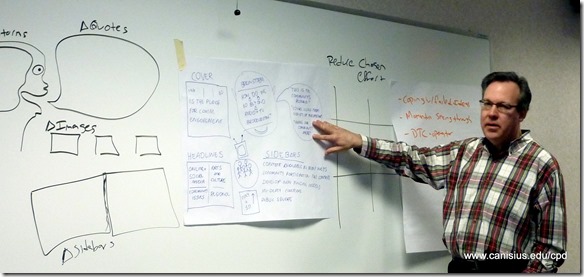People do not change in mechanical ways.
Being able to ‘predict’ how, when, the rate, resistance, & all the other variables of change are impossible. This impossibility increases when we have a team of smart people all working together for many years.
Most organizational change, as well as leadership development efforts, fail because of the executive team or human resources or consultant believe that following a predictable path & sharing a recipe is all that people need. I have been guilty of this…
Every action within work needs to be questioned – will this attract trust or repel trust?
- We know when a policy & procedure is unjust in causing us more work than is needed.
- We know when harmful manipulation is being used to create compliance.
- We know when our direct manager & their manager are fighting over power & authority, causing us to agree with goals + tasks that will not improve the company.
- We know when resources that should be supplied to complete our work are being placed elsewhere and we are still expected to complete the work on-time on-budget – while the lack of resources will later be used against us.
- We know when the meetings we are attending are bullshit.
- We know that by asking for our input, you are trying to feign engagement.
People change to achieve their goals
These goals can be aligned with work. As employees, we are smart enough to understand that there are specific constraints or boundaries, this is part of the social contract.
Trust attracting happens when we change our view from mechanical to organical change
Mechanical Change and Living Change (Behavior)
Newton’s Laws of Motion in Mechanical Systems |
Laws of Locomotion (Behavior) in Organical Living Systems |
|
| Every body continues in its state of rest, or uniform motion, in a right line, unless it is compelled to change by forces impressed upon it. |
First Law |
Living organisms will change unceasingly in speed & direction of behavior in accord with their own varying goals & their changing environment. |
| The change in motion is proportional to the motive force impressed; & made in the direction of the right line in which that force is impressed. |
Second Law |
The rate & direction of change in the behavior of living organisms will accord with the amount of energy (effort) applied by the organism’s moving in whatever direction it deems necessary to get to its goals. |
| To every action there is always opposite and equal reaction; or, the mutual effects of two bodies upon each other are equal & directed to contrary parts. |
Third Law |
Living organisms choose what they become aware of & respond to. They seek & search for pathways to their goals, & decide what to take into account & how to use whatever they judge can aid them to get to their goals. |
- From Elliott Jaques ‘Life and Behavior’ pg. 114
How can this be applied to companies & teams & leadership?
- Stop & Think… When making a change – which of the above created more motivation & longevity?
- The idea of developing a goal & keeping the boundaries of that goal broad enough to allow for emergent (non-planned) outcomes, can be worrying to managers who have a high need for control.
- Examine the ‘Results vs. Process’ model & work to re-define every time Are we achieving the goal? Is the process being used enhancing long term or short term benefits? What about our process may we change to improve the results?
- When teams become Mechanical & innovation is required. It is time to change the team members.


